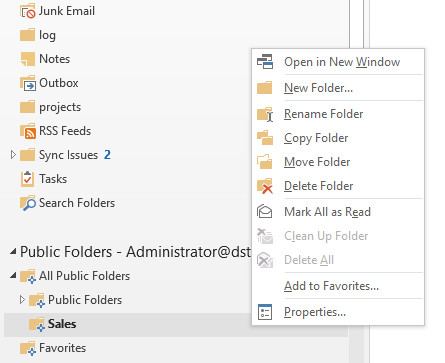

This step is ok for external dns setup or anything else is needed.or do i need create DNS records in my local DNS server xyz.local. My public DNS is registred by and have static ip from ISP as 182.76.93.1ġ} I need to port forward the below ports from static ip 182.76.93.1 to my local exchange server local ip 192.168.1.10Ģ) To access the controal pane and create a host A record and associate the static ip 182.76.93.1 to it.ģ) then i create a MX record associate it with A record.Ĥ) For outlook anywhere i create a A host record 182.76.93.1. I am writing the step wise procedure to configure the external dns setup if u find any mistake please rectify it
#EXCHANGE PUBLIC FOLDER SERVICE HOW TO#
I have setup exchange server 2013((xyz.local) in my local internal server ip 192.168.1.10 and i want access exchange server externally with “xyz.com”.Ĭan you please let me know the procedure for where can i add my external domain xyz.com in exchange server and which records i need to create in public DNS server and how to map to local internal exchange server. Note : Mail is delivered to the mail exchange server with the lowest preference number (highest priority)įirst of all very thankful to you for posting the above information. Lets see a practical scenario on create DNS records with one of the public DNS providers You can have outlook web app and other URL’s has Īnd for mail flow you can have mx.careexchange.inīy doing this – the advantage you can re route your mail flow anytime without disturbing anything. Much of the setup and preperation in my script below is similar to existing examples, but I put together the rest of the pieces and added the logic to work with contacts in a public folder structure. If you want to Split Mail flow and Outlook Web App URL. Existing examples of PowerShell scripts didnt seem to include all the pieces to successfully manage contacts in an exchange public folder. Secure SMTP (SSMTP) – port 465 | Exchange specifically does not support SMTPS (implicit TLS) Required Public IPs with One Anti-Spam Server – 2 Exchange 2010-2013 database size check Check the size of your exchange database.

can be used inside an Nagios environment to monitor the services from an Microsoft Exchange 2010 server. you will have to point it to their DNS Records or your Anti-spam Appliances. Monitor Exchange 2010 DAG replication, public folder availability and overall replication health. If you are going to use any Cloud based anti – spam or Anti-Spam Appliances.
#EXCHANGE PUBLIC FOLDER SERVICE PLUS#
Which will serve your outlook and Active Sync phones to send configuration settings automatically.Ĭreate a MX record – and point to the A record you created above for small businesses Exchange Reporter Plus public folder reports - Comprehensive reporting on Microsoft Exchange Server Public Folder listings, size, mailbox-enabling, public folder replication and other public folder attributes. Which will be the internet facing server for your Webmail and all other URLsĬreate a A Record – If the server is load balanced – You will have to point to the VIP (Virtual IP of the load balancer) Lets see what are the Public DNS records we need to Configure for Exchange 2013/Exchange 2016 (Client Access / mail flow / Autodiscover)Īnd point to the Exchange 2013 Server or Exchange 2016 Server.


 0 kommentar(er)
0 kommentar(er)
